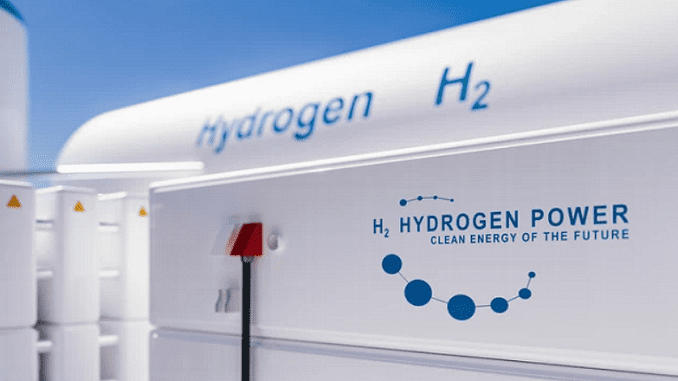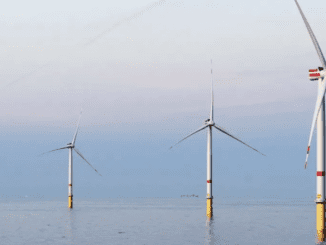
SANTA FE, New Mexico, January 30, 2022 (ENS) – New Mexico wants to be one of the nation’s first hydrogen hubs. The government has entered into an agreement with the two national laboratories located in the state to build a zero-carbon hydrogen economy not only in New Mexico but across the United States.
The New Mexico Economic Development Department, Energy, Minerals and Natural Resources Department, and the Environment Department have agreed to work with Los Alamos National Laboratory and Sandia National Laboratories to deliver “timely, material and efficient transformation of energy systems.”
The goal is to “achieve economic prosperity, reach net zero emissions by 2050 economy wide, and reduce greenhouse gas emissions in New Mexico at least 45 percent below 2005 levels by 2030, in accordance with Governor Michelle Lujan Grisham’s Executive Order 2019-003.
“A partnership between our national labs and state agencies will ensure the rapid development and deployment of zero carbon hydrogen technologies for the private sector while shaping public sector policies,” said Environment Secretary James Kenney. “New Mexico is the epicenter of innovation in the Southwest when it comes to decarbonization efforts and this partnership will help us reach our ambitious climate goals that much sooner.”
Climate experts agree that the energy challenges facing the world cannot be solved by any single approach, so the State of New Mexico is developing clean energy solutions in a portfolio that includes solar, wind, geothermal, energy storage, and zero-carbon hydrogen.
“These partnerships give us a competitive advantage over other states in developing new technologies and low-carbon energy solutions,” said Economic Development Department Cabinet Secretary Alicia J. Keyes.
“These innovative advancements right here in New Mexico will benefit the planet and create incentives for new businesses to grow and relocate in the state,” said Keyes. “These are companies with skilled, high-paying jobs that want to be part of this exciting new clean-energy industry.”
The agreement, signed earlier this month, allows these organizations to partner on the science, technologies and policy impacts of zero-carbon hydrogen as it relates to climate, economy, energy, environment, equity, research, water, and New Mexico’s workforce.
“Governor Michelle Lujan Grisham has set clear goals for all of us in achieving a transition to a low-carbon state,” said Energy, Minerals and Natural Resources Secretary Sarah Cottrell Propst. She said the agreement, “ensures we’ll use the best science and data in powering New Mexico with clean and sustainable sources.”
This agreement identifies these areas of cooperation:
• Zero-Carbon Hydrogen Generation from Methane and Biomass
• Zero-Carbon Hydrogen Generation using Concentrating Solar Power
• Zero-Carbon Hydrogen Generation from Brackish and Saline Waters
• Large-Scale Hydrogen Storage
• Hydrogen Distribution
• Production of Carbon-neutral Alternatives to Petroleum-based Products
• Direct Air Capture of CO2
• Fit for Purpose End Use Applications
• Safety, Codes and Standards
• Monitoring
• Lifecycle Analysis of Zero Carbon Hydrogen Emissions
“Los Alamos is committed to and engaged in helping find technical solutions to today’s urgent energy challenges; we also recognize that we must partner with impacted communities in delivering solutions,” said John Sarrao, deputy Laboratory director for Science, Technology and Engineering at Los Alamos National Laboratory.
“Sandia National Laboratories is excited to partner with the State of New Mexico and Los Alamos National Laboratory to forge a path to zero-carbon hydrogen,” said Andrew McIlroy, the associate labs director for Integrated Security Solutions at Sandia National Laboratories.
“Sandia has long history in hydrogen materials interactions, hydrogen safety, emerging energy technologies and geosciences,” McIlroy said. “Our experts will work with our partners to accelerate research on the production, storage and distribution of zero-carbon hydrogen for transportation, industrial and other applications.”
Now, each party will identify lead coordinators for the overall planning and implementation of this partnership – quarterly meetings, the formation of technical workgroups, technology transfer within the public and private sectors, and the development of New Mexico’s zero-carbon hydrogen workforce.
Featured image: A hydrogen storage facility. Hydrogen is non-toxic and dissipates quickly if released. But hydrogen has a wide range of flammable concentrations in air and a lower ignition point than gasoline or natural gas, so it can ignite more easily. (Photo from Shutterstock)
© 2022, Environment News Service. All rights reserved. Content may be quoted only with proper attribution and a direct link to the original article. Full reproduction is prohibited.



